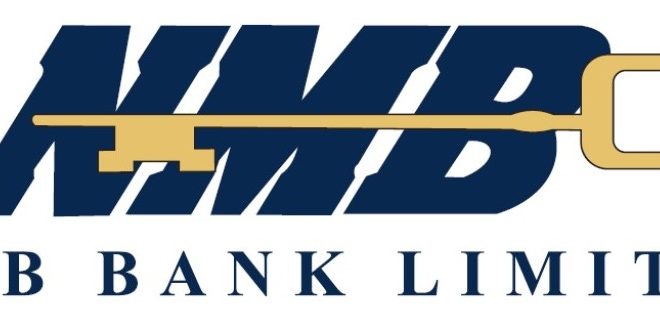The ups, downs of 2022
Zimbabwe went through contrasting economic episodes this year, recording a first-half that was largely characterised by economic turmoil and later some level of stability in the final half.
The economic crisis, characterised by runaway inflation, steep depreciation of the local currency and skyrocketing fuel prices due to the effects of Russia’s war in Ukraine, caused many Zimbabweans to fear a return to the hyperinflation era of 2008.
That era saw Zimbabwe abandoning its currency and adopting a multi-currency system, dominated by the US dollar, which was generally referred to as dollarisation.
As inflation ravaged, Zimbabwe stopped the calculations, but at the last official count in June 2008, it had reached 231 percent. The International Monetary Fund (IMF) estimates that inflation peaked at 500 billion percent in September 2008.
Undeniably, the economic crisis during the first half of 2022 evoked fears of hyperinflation that plagued the country sending spine-chilling waves to business people, ordinary people and policymakers.
Monthly inflation quickened from 5,3 percent in January to 30,7 percent in July. There was a massive slowdown in consumer demand as runaway inflation fueled a surge in prices.
The spike in consumer prices was worsened by an increase in fuel prices as a result of supply issues resulting from Russia’s war in Ukraine, which began on February 24.
In May, petrol prices reached US$1,71c per litre for diesel and US$1,63c for petrol.
The lack of confidence in the local currency saw many economic agents rejecting it.
Most businesses as well as Government departments, started pegging prices of goods and services in foreign currency or linking prices to the widely used black market exchange rates as a hedge against the loss of value of the Zimbabwean dollar.
In an apparent state of panic, the authorities took an unprecedented decision to suspend lending to individuals, private and public sectors in a bid to prevent the collapse of the currency. The move was meant “to minimise creation of broad money that is prone to abuse for purposes of manipulating the exchange rate for financial gains, and to allow current investigations, lending by banks to both the government and the private sector,” President Mnangagwa said on May 7.
“It has been a tough period, which caused a lot of uncertainties,” said Prince Charangwa, a senior employee at a local supermarket in Harare. “It had become difficult for many people to plan because of ever-changing prices. At some point, we would be told to change prices twice a day, depending on the product,” Charangwa recalled.
John Mushumha, a Harare-based secondary school teacher said the economic crisis experienced during the first half of the year, was reminiscent of the “cursed” hyperinflation era of 2008 when prices doubled every day. That time, one would need wards of cash to buy even small items like a loaf of bread or a bar of laundry soap.
“I smelled hell,” said Mushumha. “But miraculously, things just turned around,” he added.
Zimbabwe somehow escaped this episode, with the country seemingly witnessing stability since June when some policies were introduced to stabilise the economy.
But some analysts believe the measures are less likely to be sustainable. The policies included raising the interest rates to 200 percent to curb speculative borrowing, suspension of payments to government contractors largely blamed for fuelling the black market activities, and the introduction of gold coins as an alternative investment instrument to remove pressure on the US dollar demand.
But sustainability questioned
Inflation has persistently declined and the parallel market exchange rate stabilised.
“There was some level of stability, especially between August and November and planning had become easier, especially when dealing with the Zimbabwe dollar,” Carlos Tadya, a Harare-based analyst told Business Weekly in an interview.
“But we are not sure about the sustainability of these policies. Already we see the rate going up, prices are going up as well; maybe is because of huge holiday spending.”
The Reserve Bank said it will keep its key policy rate until during the first quarter, but businesses are worried over high-interest rates which are “very counterproductive.”
Early this month, the Monetary Policy Committee decided to maintain the bank policy rate and medium-term lending rate of 200 and 100 percent, respectively and to review the interest rates in the first quarter of 2023 “as dictated by inflation developments.”
“One on hand, the measures appear to have stabilised inflation and currency but on the other, businesses are finding it hard to borrow because of high-interest rates,” Tadya said.
Economics, Professor Gift Mugano, weighed in saying said the current measures to stabilise the economy were unsustainable and could not be relied on.
“We can’t sustain the current stability by refusing to pay contractors and other service providers and then think that we can hold on for a long time,” said Prof Mugano.
“Likewise, we can sustain stability on the back of a 200 percent interest rate. “…It is killing business. There is no business which can run a business sustainably with the 200 percent interest rate. It can only be a thief which can pay back the loan four fold.
“This is why you see that businesses are now switching their Zimbabwe dollar into USD loans.
“This is unprecedented. It defies logic for a debtor to run away from a soft currency which naturally is eroded by inflation to the advantage of the debtor at the expense of the creditor.
The International Monetary Fund (IMF) team led by Dhaneshwar Ghura, conducted a mission to Harare recently and had this to say. “The IMF mission notes the authorities’ efforts to stabilise the local foreign exchange market and lower inflation.
“In this regard, the swift tightening of monetary policy along with greater official exchange rate flexibility and a prudent fiscal stance are policies in the right direction and have contributed to a narrowing of the premia in the parallel foreign exchange market.
“In addition, the authorities have identified large payments to suppliers, the result of over-invoicing, as a source of pressure on the parallel market and in response have launched value-for-money audits and introduced measures to strengthen procurement regulations. Uncertainty remains high, however and the economic outlook will depend on the implementation of key policies and the evolution of external shocks.”-ebusinessweekly










